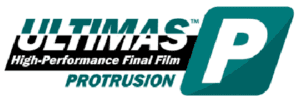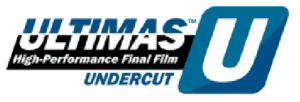Turn the calendar way back to 1981 – the early days of fiber optics. I was working for a connector manufacturer, and one of my customers asked, “What is the Return Loss of your connector?” I didn’t know the answer! I was stumped and, frankly, I was embarrassed.
Since that day, I’ve made it a lifelong career objective to thoroughly understand all the geometry parameters that impact Return Loss and Insertion Loss. Critical geometry parameters that impact the optical performance of connectors include Radius, Angle/Apex, Key Error, and fiber height.
Now, 35 years later, I supply products and test equipment to fiber optic cable assembly facilities all over the world. These days, a lot of my customers are stumped by a different question: What is the ideal fiber height for a fiber optic connector?
Why is this such a common (and perplexing) question? Partly, it’s driven by our industry’s various specifications for fiber height.
The specification dictated by IEC’s international standards is wide open and incredibly lax. This spec calls for -125/+100 nanometers – that’s a 225-nanometer spread! Think of it this way: It’s like driving your car down an interstate highway that is 10 lanes wide. That’s a lot more space than you need. Most cable assembly devices under test will easily pass this wide-open specification.
Does your cable assembly facility follow the generic industry specification of +/-50 nanometers? I consider this spec to be too broad as well, given the total tolerance of 100 nanometers. Following our metaphor, this specification reduces the 10-lane highway to about 4 lanes wide, which is still more than needed. In testing, most connectors should pass this specification.
Plus, there’s another complication – some manufacturers’ specs are even tighter than the “generic” industry standard, for example, 0/+20 nanometers. Following our metaphor, this is like narrowing our road to a footpath. When it comes to quality, I believe such strict specs are more stringent than necessary. When it comes to production, I believe these tight constraints cause undue pressure to produce acceptable yields. Remember, I’ve worked in production facilities. I understand the realities of fabricating high-quality jumpers and cables that meet specs – while producing the required yields.
Given my years in this industry, I can offer a historical perspective on fiber height. The fact that we have so many different – and lax – specifications illustrates our industry’s advancements. Decades ago, we had absolutely zero control over fiber height. Even a few years ago, our ability to control fiber height was mediocre. With today’s technology, especially recent advancements in final films, we have extraordinary control over fiber height.
In reality, there is no ideal fiber height. I recommend aiming for a target fiber height of +/-20 nanometers.
I have personally pursued the question – What is the ideal fiber height? – by conducting a series of tests. I created connectors with different fiber heights and subjected them to environmental testing to analyze the connectors’ performance. This included temperature testing between 80 degrees centigrade (176 degrees F) and -40 degrees centigrade (-38 degrees F).
Based on my first-hand, environmental testing of the declination of the ceramics under pressure and under temperature, I recommend targeting a fiber height of +/-20 nanometers. This means you can go down to -20, hover at zero, or go as high as +20 nanometers. This target spec offers a tolerance of 40 nanometers. This enables your cable assembly facility to produce high-quality devices without being restricted by extremely tight tolerances that result in low yields.
Today, fiber height is the easiest geometry parameter to control. How do you achieve the target fiber height of +/-20 nanometers?
The tightened tolerance of +/-20 is surprisingly easy to achieve with the advanced final polishing lapping films now available. In fact, two new films enable you to control the fiber height you generate – along with the specific pressure, speed, and pad durometer that you identify for your facility’s production environment.
These new final polishing lapping films are:

- ÅngströmLap Ultimas-P – This protrusion final film generates positive fiber height.

- ÅngströmLap Ultimas-U – This final lapping film generates negative fiber height:
I had the opportunity to tour the Ångström facility in Japan and learned about the manufacturer’s propriety process. These two final films control the depth of material, deposition of material, particle size, and other physical attributes that govern fiber height.
Feel free to call me to learn more about these final films. I’m excited about this technological innovation in lapping films. In fact, I would call this the most significant innovation in film that I’ve seen in the past decade or two in my career – my very long career – in fiber optics!



